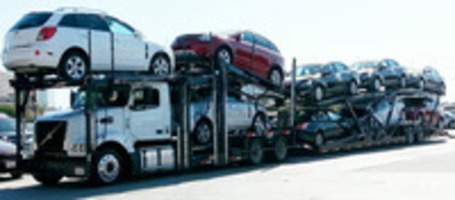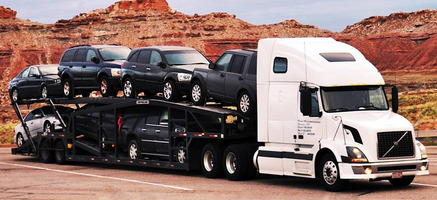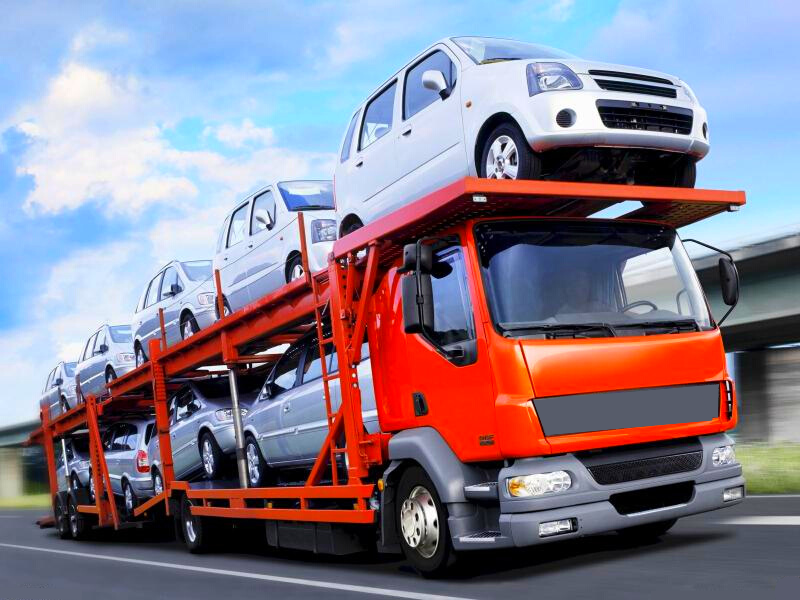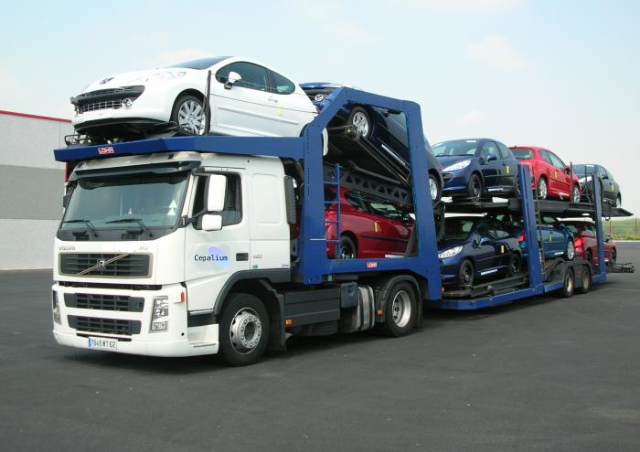Los Angeles, the city of dreams and aspirations, is known for its glitz, glamour, and non-stop hustle. Suppose you’re a car owner in this buzzing metropolis. In that case, you understand the importance of finding a reliable car transport company that can safely move your beloved wheels from one point to another. Whether you’re relocating […]
Category Archives: Auto Transport Rates Calculator
How Many Tons Can A Bulk Ship Carry?
Bulk ships, also known as bulk carriers, are cargo ships specially designed to transport unpackaged bulk cargo, like grains, coal, ore, and more. The amount of cargo a bulk ship can carry, expressed in tons, depends on various design factors like the ship’s dimensions, DWT rating, and more. Let’s take a deeper look into how bulk ship tonnage capacity is determined Auto Transport Rates Calculator.
Determining Factors for Bulk Ship Tonnage Capacity
There are a few key factors that determine the maximum cargo tonnage a bulk ship can transport:
1. Deadweight Tonnage (DWT) Rating
Deadweight tonnage, often abbreviated as DWT, is the total weight a ship can carry when loaded to its maximum draught. It includes cargo, fuel, freshwater, ballast water, provisions, passengers, and crew. DWT is always expressed in metric tons and is considered the standard measure for bulk carrier capacity.
A bulk ship’s DWT rating is determined during the design and construction phase based on its dimensions, draft restrictions at ports it will frequent, and stability requirements. Larger DWT ratings allow a ship to transport more cargo while still meeting operational standards. Common DWT ratings for modern bulk carriers range from 30,000 metric tons to over 200,000 metric tons.
2. Cargo Hold Capacity
The overall internal volume and dimensions of a bulk ship’s cargo holds determine how much unpackaged cargo it can physically accommodate. Larger cargo hold designs allow for more cargo area and higher tonnage loads.
Modern bulk carriers are designed with multiple separate cargo holds below deck to help maintain proper weight distribution as cargo is loaded and unloaded. Cargo hold capacities can range from 15,000 cubic meters up to over 100,000 cubic meters depending on the ship size.
3. Maximum permissible draft
Draft refers to how deep a ship sits in the water. Deeper drafts allow for more submerged cargo space and tonnage potential, but also restrict the ship’s ability to navigate certain shallow ports and waterways Auto Transport Rates Calculator.
Maximum permissible draft is an important limiting factor set by the bulk ship designer based on port restrictions it must comply with globally. This draft restriction, combined with the hull dimensions and cargo hold volume, determine the ship’s ultimate load capacity.
4. Cargo type and density
Different bulk cargoes have varying densities that impact tonnage calculations. Heavier, denser commodities like iron ore translate to higher weight tonnages than lighter bulk goods.
Ship designers consider typical cargo mixes and densities when optimizing dimensions and DWT ratings. More space is usually allocated for low density goods needing higher volume capacity.
Realistic Cargo Tonnage Capacity Figures
With the above design factors in mind, here are some realistic cargo capacity figures we can expect from typical bulk carriers:
Handymax Bulk Carriers (30,000-50,000 DWT)
- Cargo hold capacity: 20,000-40,000 cubic meters
- Max permissible draft: 11-13 meters
- Average cargo tonnage: 30,000-45,000 metric tons
Handysize Bulk Carriers (10,000-30,000 DWT)
- Cargo hold capacity: 10,000-25,000 cubic meters
- Max permissible draft: 9-11 meters
- Average cargo tonnage: 15,000-25,000 metric tons
Panamax Bulk Carriers (60,000-80,000 DWT)
- Cargo hold capacity: 40,000-70,000 cubic meters
- Max permissible draft: 13-14 meters
- Average cargo tonnage: 50,000-75,000 metric tons
Capesize Bulk Carriers (100,000 DWT+)
- Cargo hold capacity: 70,000-130,000 cubic meters
- Max permissible draft: 15-20 meters
- Average cargo tonnage: 100,000-180,000 metric tons
As you can see from these examples, larger bulk carriers with higher DWT ratings, more cargo hold space, and deeper draft allowances can transport substantially higher tonnage loads compared to smaller bulk ships.
Factors Affecting Real Tons Carried
While the above figures represent maximum theoretical cargo tonnage capacity, the actual tons carried on a voyage may vary due to these operational considerations:
Bunker Fuel and Provisions
A certain amount of space needs to be reserved onboard for bunker fuel and provisions to power the ship’s engines, generators and feed the crew over long voyages. This takes up cargo capacity Auto Transport Rates Calculator.
Cargo Separation
Certain cargoes like grains need to be kept physically separated in holds using temporary bulkheads to prevent cross-contamination. This compartmentalization reduces usable cargo space.
Load Line Restrictions
International load line regulations set minimum allowed under-keel clearances for safety. Cargo cannot fill the holds completely, leaving a margin of empty space below for stability.
Draft Restrictions
Ports have certain maximum permitted draft depths. If low on arrival, it may not be possible to fully utilize the maximum cargo capacity. Ballast water needs adjustment.
Cargo Characteristics
Factors like moisture content, particle size distribution and density for some cargoes directly impacts actual weight versus volume capacities achieved.
Given these operational realities, it’s common for a bulk carrier to arrive at a loading port with 10-20% less capacity as fuel and provisions are loaded, leaving space for safe cargo transports under all conditions. Modern ship management technologies help optimize actual cargo loading.
Tonnage Capacity Trends over Time
Over the decades, larger bulk ship sizes have become the norm to maximize economies of scale in the bulk trades. Here are some tonnage capacity trends worth noting:
- In 1960s, average bulk carriers topped out at 35,000 DWT with some supermaxes at 75,000 DWT.
- By 1980s, panamax bulkers were common at 60,000-80,000 DWT, setting a ceiling until 1995 at 80,000 DWT.
- Post-Panamax designs over 80,000 DWT started appearing in 1995. Today capesize bulkers over 200,000 DWT are routine.
- Average bulk ship sizes have doubled each decade since 1960. New orders are focused on very large ore carriers and limestone ships at 200,000 DWT plus.
- Port infrastructures are expanding to accommodate very deep drafted bulk giants, allowing maximized tonnage capacities to cut unit costs.
This shows how cargo carrying potential is always pushing boundaries driven by economies of scale. Larger bulkers continue setting new tonnage records, growing key sectors like commodities trade.
Parting Words
A bulk ship’s cargo tonnage capacity depends greatly on its design, dimensions and DWT rating which determine maximum theoretical loading. Actual cargoes carried factor in bunker fuel space, stability requirements, load line rules, draft restrictions, and cargo characteristics.
Modern bulk carriers are precision engineered behemoths capable of transporting 100,000+ metric tons halfway across the world in a single voyage. Tonnage capacities will continue rising as port capabilities also progress to handle future ultra large bulk vessels. Over time, bulk shipping’s economies of scale have dramatically expanded efficient global trade in bulk commodities.
Welcome to our blog post on the exciting world of car transportation! Whether moving across the country or purchasing a vehicle from another state, transporting your car can be a convenient and efficient option. But before you hit the road in search of quotes, it’s essential to understand the factors that affect the cost of […]
Are you an automotive enthusiast who’s always on the lookout for unique and hard-to-find cars? Or maybe you’re searching for a great deal on your dream vehicle? Well, look no further than our friendly neighbors up North! That’s right – Canada is known for its breathtaking landscapes, maple syrup, and treasure trove of unique automobiles. […]
Do you need a reliable and trustworthy enclosed auto transport company to ship your precious vehicle safely? Look no further! This ultimate guide will walk you through choosing the top-rated enclosed auto transport companies. We understand how important it is for you to ensure that your vehicle arrives at its destination in pristine condition, free […]
Are you dreaming of cruising the autobahns of Germany in your very own American-made car? Well, you’re not alone! Many people take advantage of the opportunity to ship their beloved vehicles from the USA to Germany. But before embarking on this exciting adventure, it’s essential to understand the factors determining the cost of shipping a […]
Are you planning a cross-country adventure and need to figure out the best way to transport your car? Look no further! In this ultimate guide, we will explore all the factors you should consider when packing your car for a road trip and delve into the different carrying capacities of various types of vehicles. And […]
Are you planning a road trip across state lines? Or maybe you’ve recently moved to a different state and need to get your car inspected. Whatever the reason, if you’re wondering whether it’s possible to have your car inspected in a different state, we’ve got all the answers for you! In this blog post, we’ll […]
Moving cross country can be an exciting and daunting experience all at once. Whether you’re relocating for a new job opportunity, starting fresh in a different city, or simply craving a change of scenery, one thing remains constant: the need to move your belongings from point A to point B. But fear not! Moving doesn’t […]
Are you in the market for a new car? If so, you may be wondering whether there are any differences between cars made in the United States and those made in Canada. Well, buckle up because we’re about to take a road trip through the world of automotive manufacturing! In this blog post, we’ll uncover […]
Planning to move from California to New York and wondering how to transport your beloved car? Well, you’re in the right place! Shipping a car across the country can seem like a daunting task, but fear not. In this comprehensive guide, we’ll explore everything you need to know about transporting your vehicle from sunny California […]










